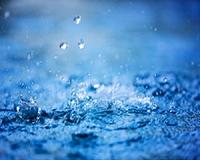 |
Washington DC (SPX) Mar 25, 2011 U.S. Department of Agriculture (USDA) scientists are helping meet the water demands of a riparian desert region that is home to a national conservation area and a thriving military base. Agricultural Research Service (ARS) hydraulic engineer Dave Goodrich and hydrologist Russ Scott have been part of Arizona's Upper San Pedro Partnership (USPP)-a mix of 21 federal, state, and local groups managing the region's water-supply needs-since the association started in 1998. ARS is USDA's chief intramural scientific research agency, and this work supports the USDA priority of responding to climate change. Fort Huachuca, which is the primary economic engine in the upper San Pedro River valley, draws its water from the aquifer that sustains the desert river, but this groundwater is being depleted more rapidly than it is replenished. In 2004, Congress directed the Department of the Interior to work with the Department of Defense, USDA and the USPP to develop water use management and conservation measures that would restore and maintain water supplies in the upper San Pedro watershed. Goodrich and Scott both work at the ARS Southwest Watershed Research Center in Tucson, Ariz. The scientists are studying how much water is used by riparian vegetation and evaluating how storm water runoff from urban development affects groundwater reserves. As part of this work, Goodrich and others measured storm water runoff from undeveloped land at the edge of Fort Huachuca and from a newly developed area just outside the military installation. They found that a third of the runoff from the developed site resulted just from the compaction from the surface soils during construction-and not from the installation of impervious barriers, as they had expected. Meanwhile, Scott and his colleagues found that mesquite woodlands use much more water than cottonwood and willow trees that grow along the riverbanks. He used this finding to develop a GIS-based riparian evaporation and transpiration tool that regional land managers can use to estimate water savings by replacing mesquite with native desert grasses.
Share This Article With Planet Earth
Related Links Agricultural Research Service (ARS) Water News - Science, Technology and Politics
 Report Uncovers Key Trends In Water Resources Research
Report Uncovers Key Trends In Water Resources ResearchAmsterdam. Holland (SPX) Mar 25, 2011 The report "Confronting the Global Water Crisis through Research - 2010", carried out by Elsevier, reveals the increasingly international and strategic nature of water resources research. Examining major trends in water research at the international, national and institutional levels, the report highlights the escalation in the article output of countries conducting water resources researc ... read more |
|
| The content herein, unless otherwise known to be public domain, are Copyright 1995-2010 - SpaceDaily. AFP and UPI Wire Stories are copyright Agence France-Presse and United Press International. ESA Portal Reports are copyright European Space Agency. All NASA sourced material is public domain. Additional copyrights may apply in whole or part to other bona fide parties. Advertising does not imply endorsement,agreement or approval of any opinions, statements or information provided by SpaceDaily on any Web page published or hosted by SpaceDaily. Privacy Statement |